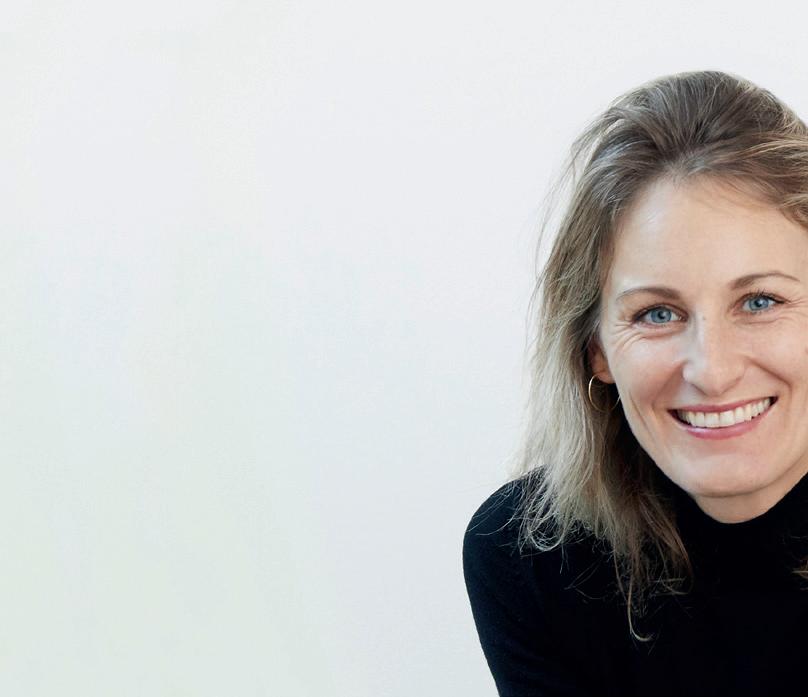3 minute read
EMBRACING CHANGE
Next Article
Senior Content Producer Sam Davies talks to Aidro Hydraulics CEO Valeria Tirelli about the company’s five-year journey with metal AM.
In the office of a small Italian hydraulics manufacturer lies an American trade magazine, left open on a double page spread where one company has celebrated a special anniversary by placing two adverts, side by side, of the same product. One was from 70 years ago, the other from the present day, not that you would be able to tell the difference by the design of the part.
This, along with a ‘spirit of innovation’, served as inspiration for Valeria Tirelli, the CEO of Aidro Hydraulics, as she looked to evolve the company’s manufacturing methods. Aidro, a team of just 15 people based in Italy’s Lombardy region, has been producing hydraulics products and parts since 1982. In 2012, Tirelli took the reins from her father, Paolo, and five years later she would make the bold move of integrating additive manufacturing (AM) technology into the business to produce some of its end-use products.
“At that time, there were no other companies in hydraulics using 3D printing for hydraulics parts,” Tirelli told TCT. “There were companies using 3D printing for tooling or sand molds, for example, but to create functional parts with additive manufacturing was completely new. We were a kind of pioneer.”
As the company – who for 35 years had used conventional means to manufacture its hydraulics products – blazed the additive trail, it pitched up at Hannover Messe. Its modestly sized booth, however, didn’t put off the wide eyes of some of the biggest industrial companies around. Tirelli’s rolodex grew by the hour, as attendees from the motorsports, robotics and energy sectors queued up to learn how the company was using AM to produce its parts.
After nearly five years of using the EOS M290 platform, the company can now tell interested parties about its 3D printed hydraulic spools, hydraulic valve blocks, heat exchangers and high-pressure hydraulic manifolds. With redesigned products like these, weight reductions up to around 7585% are common, part consolidations too, as are a range of performance benefits.
A pressure reducing valve body, for example, was consolidated down to one component with a 60% weight reduction and printed in stainless steel, maraging steel and aluminum. The stainless-steel version offered high corrosion resistance, making it suitable for the oil & gas and maritime sectors, while the maraging steel product provided extra strength and toughness. Meanwhile, the addition of new holes forms in a hydraulic spool product enabled the passing area of oil inside the spool to be increased, and newly integrated internal channels inside a hydraulic valve block ensured better flow and space savings. Aidro has also enjoyed designing curved channels with additive to replace
the 90-degree intersection angles that had to be produced with traditional methods.
“When you have to connect to a channel in conventional machining, the intersection is at 90 degrees, and there is less pressure: some pressure drops, some dead zone,” Tirelli said. “With additive manufacturing, we are able to create the coolant channel exactly how we need, and we have a better performance, less pressure drops, and we avoid the auxiliary [drillings] that are normally a potential leakage of the oils in machining. So, we have a safer part.”
These design changes, Tirelli believes, have resulted in products that are safer for the agricultural industry, because they’re less likely to leak; more environmentally friendly for the transport sectors, because of the weight reductions; and matching or bettering the performance of the traditional products across the board. The company has also committed to carrying out lifecycle assessment analysis to accurately measure the carbon footprint impact, while its ISO 9001 certification ensures the quality of each product it manufactures. Aidro is also exploring virtual warehousing and is part of F3nice’s efforts to recycle obsolete parts as raw material.
Introducing AM into the business has been significant for Aidro, whose optimism for the future is rooted in the performance demonstrated by additive manufacturing over the last five years. It has helped to achieve important design changes and product enhancements; drawn the interest of the likes of Porsche, Equinor, Shell and Boston Dynamics; and resulted in the company signing more than 150 NDAs in five years. Oh, and it will mean that Aidro is never likely to be found advertizing the same product with the same design 70 years apart.
“Since we introduced additive manufacturing,” Virelli finished, “we have faced a real digital transformation. This is our experience. But it’s not only a new way to produce parts, it’s really a new mindset and this changes the way we work every day.”
“Since we introduced AM, we have faced a real transformation.”








